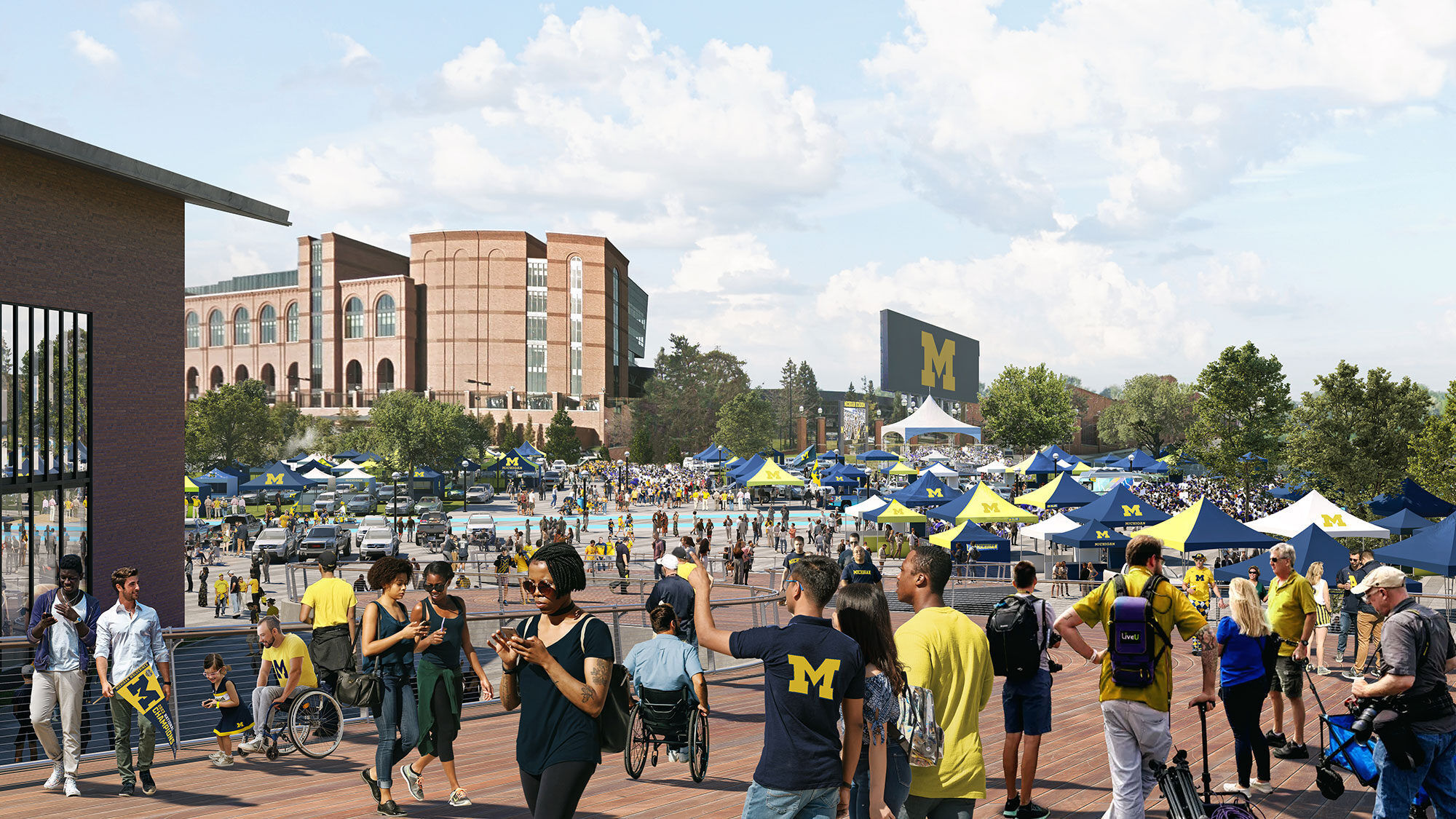Where do we begin?
John Lennon once sang, “Life is what happens when you’re busy making other plans.”
Clearly he never worked at a university. And he didn’t coin the phrase either. American writer, journalist, and cartoonist Allen Saunders is credited with originating the saying, “Life is what happens to us while we are making other plans” in 1957. Lennon modified it slightly in his song “Beautiful Boy (Darling Boy).”
But I digress. Earlier this month, the administration released Campus Plan 2050, an elaborate, detailed, and ambitious blueprint that charts a dynamic path for the next 25 years. It’s not the first master plan seeking to shape the future campus and it certainly won’t be the last.
Resident historian Jim Tobin could tell you there have been several plans throughout the University’s lifetime. Some have been more fully realized than others. The Panic of 1837 was no friend to the master plan of 1840, for example. The early Ann Arbor campus was cobbled together on a shoestring in a somewhat piecemeal approach, Tobin says, until an actual plan was codified under President Marion Leroy Burton (1920-25). That’s when the place really began to take cohesive shape. A building boom from the teens to the ’30s brought us Angell Hall, Hill Auditorium, and the Michigan Union to name just a few resident icons. Take that, John Lennon.
Throughout the years we’ve seen plans to build and plans to demolish, plans to renovate and plans to build more. Any time something goes up — or comes crashing down — fans and detractors have made their feelings known. Architects like Albert Kahn, Alden Dow, and the Pond Brothers left their respective marks on the early-20th century, while more contemporary architects like Gunnar Birkerts, Charles W. Moore, Kohn Pederson Fox, and Douglas Compton dominated the later years. Right now, there are cranes and construction sites clogging the 21st-century campus, a sign of progress to the visionary, a pain in the neck for the harried commuter.
As a result of all this planning these past 200 years, we’ve seen multiple hospitals, dormitories, laboratories, classroom buildings, performance spaces, museums, and other facilities rise and transform to meet the evolving needs of our campus community. Did you know the campus once hosted its own zoo?
The far-reaching optimism in Campus Plan 2050 can make the glass-half-empty types a little anxious. Those are some lofty goals we’ve set forth and the renderings seem fantastical and futuristic.
But for the glass-half-fulls out there, it’s reassuring to know that yes, life will happen, and, yes, it’s thanks to our friends who are busy making campus plans.
(Lead image, courtesy of Campus Plan 2050, shows a proposed Fan Zone of the future, adjacent to Michigan Stadium.)





William Ronsaville - 1963
Please send me a copy of this future Plan. I am interested in the future of the School of Music on the North Campus since I was only there when we were scattered on the central campus and even in churches around Ann Arbor. Our 4-month Symphony Band tour of Russia, the Middle East and Eastern Europe in 1961 may have helped make the decision to provide a central location for us finally.
Reply
Deborah Holdship
The plan is linked in the story. Click here: https://campusplan2050.umich.edu/
Reply
Deborah Holdship
You can find details here: https://campusplan2050.umich.edu/
Reply
Henry Lowendorf - 1964
As big and bold as the U of M is it fits into the state of Michigan and the USA. Is there a part of the university plan, or a collective, that looks at how it interacts with the changes in state and nation over the next 25 years?
Reply